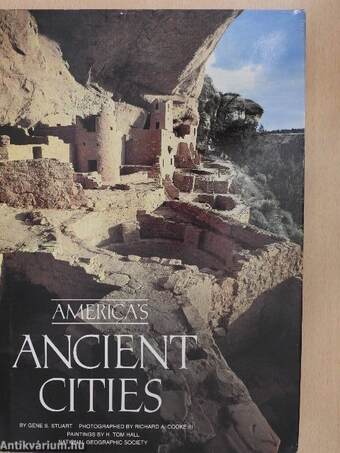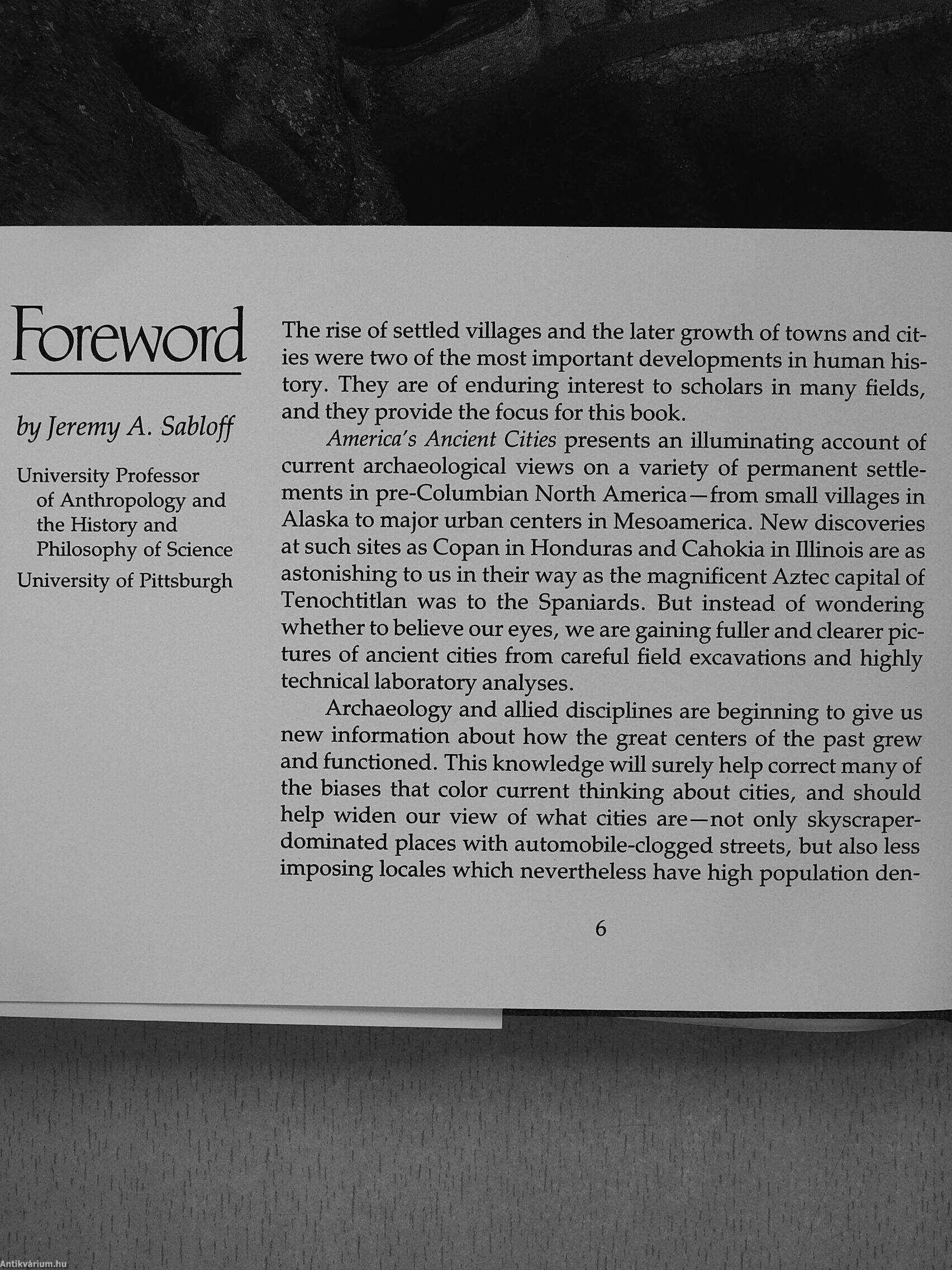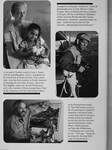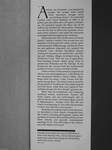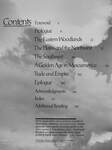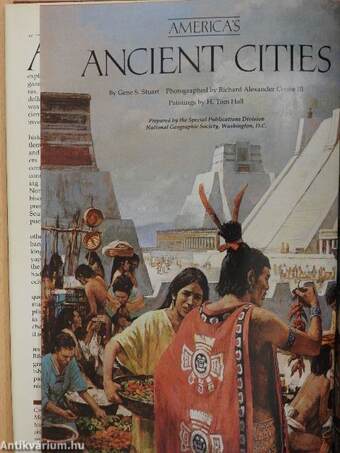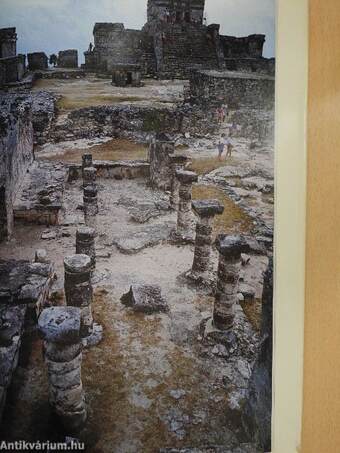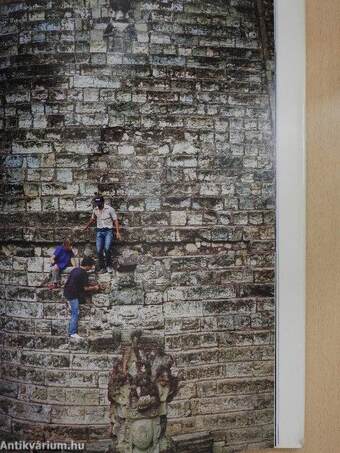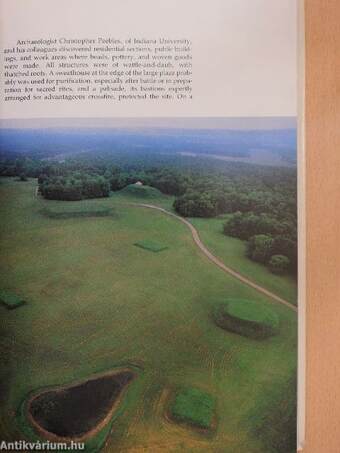1.067.053
kiadvánnyal nyújtjuk Magyarország legnagyobb antikvár könyv-kínálatát

VISSZA
A TETEJÉRE
JAVASLATOKÉszre-
vételek
America's Ancient Cities
| Kiadó: | National Geographic Society |
|---|---|
| Kiadás helye: | Washington |
| Kiadás éve: | |
| Kötés típusa: | Fűzött keménykötés |
| Oldalszám: | 199 oldal |
| Sorozatcím: | |
| Kötetszám: | |
| Nyelv: | Angol |
| Méret: | 26 cm x 18 cm |
| ISBN: | |
| Megjegyzés: | További kapcsolódó személyek a könyvben. Színes fotókkal, illusztrációkkal. |
naponta értesítjük a beérkező friss
kiadványokról
naponta értesítjük a beérkező friss
kiadványokról
Előszó
TovábbFülszöveg
A journey to Yucatan reunites Gene S. Stuart with her granddaughter, Gloria. A graduate of the University of South Carolina, in her native state, Gene has been involved in North American archaeology for more than 30 years. She wrote The Mighty Aztecs/or Special Publications and is the co-author 0/Discovering Man's Past in the Americas and The Mysterious Maya.
Strapped to a helicopter, Richard A. Cooke III photographs sites in New Mexico's Chaco Canyon. Born in Hawaii and now a resident of Oregon, Rik has contributed to Builders of the Ancient World and other Society publications. America's Ancient Cities, he says, "combined my two favorite life interests—photography and architecture."
In his Pennsylvania studio, H. Tom Hall works on one of the 15 paintings he created for America's Ancient Cities. A book illustrator for 30 years, chiefly of historical subjects, he was the artist for two other Special Publications, John Muir's Wild America and Into the Wilderness. "Archaeology was... Tovább
Fülszöveg
A journey to Yucatan reunites Gene S. Stuart with her granddaughter, Gloria. A graduate of the University of South Carolina, in her native state, Gene has been involved in North American archaeology for more than 30 years. She wrote The Mighty Aztecs/or Special Publications and is the co-author 0/Discovering Man's Past in the Americas and The Mysterious Maya.
Strapped to a helicopter, Richard A. Cooke III photographs sites in New Mexico's Chaco Canyon. Born in Hawaii and now a resident of Oregon, Rik has contributed to Builders of the Ancient World and other Society publications. America's Ancient Cities, he says, "combined my two favorite life interests—photography and architecture."
In his Pennsylvania studio, H. Tom Hall works on one of the 15 paintings he created for America's Ancient Cities. A book illustrator for 30 years, chiefly of historical subjects, he was the artist for two other Special Publications, John Muir's Wild America and Into the Wilderness. "Archaeology was a new field for me," Tom says. "Doing the paintings for this book filled a gap in my education."
. ^ , i. ' 1 ' ¦ ' .
I¦'
' ¦¦ iI' 'ii
. Il,' ¦ ' . I ; I
¦ •.' v' ' ¦¦ !¦ p i';
¦ :i. iVh ¦ ' '
\ ' i ¦¦ i I
:(• M . ¦iV ¦
I I'
"Hi
/\ merica, say historians, was peopled by / % savages; but savages never reared / \ these structures, savages never JL V carved these stones." So concluded explorer John Lloyd Stephens in 1839 as he gazed upon the silent ruins of Copan in Honduras. He promptly bought the Maya city for 50 dollars and recorded his observations. Stephens was not the first to delve into mysteries of ancient urban America—and today his successors investigate sites throughout the continent.
Sparming more than 14,000 years of human history, America's Ancient Cities reveals how settlements evolved and how urban centers grew and functioned. Millennia ago, prehistoric hunters and gatherers dispersed and peopled the continent. Later, Eastern Woodland cultures constructed mounds and earthworks, and fishing and whaling villages developed along the Northwest Coast. With the rise of agriculture, bison-hunting farmers settled along rivers in present-day Nebraska and the Dakotas. In the Southwest, the Anasazi built the multiroomed pueblos of Chaco Canyon and Mesa Verde.
Urban centers in Mesoamerica surpassed aU others in size and magnificence. Lofty Monte Al-ban dominated Mexico's Oaxaca Valley. Maya kings ruled city-states—Coba, Uxmal, and Ma-yapan among them. The Aztecs were so awed by the pyramids of Teotihuacan they believed gods had built them, while their own capital of Tenochtitlan became the New World's greatest city.
Many sites lie unexplored, and intriguing questions remain unanswered. Experts stiU study Copan, and one archaeologist calls its piles of carved stones "the largest jigsaw puzzle in Mesoamerica." Another notes that the real charm of archaeology is "not what old mysteries it solves, but what new ones it poses."
Mysteries are explored and recent discoveries described in Gene Stuart's thoughtful text; Rik Cooke's haunting photographs capture the grandeur of ancient cities and the artistry of vanished cultures; and specially commissioned paintings by H. Tom Hall bring to life ceremonies and customs of the past.
Colorado sunset bathes the ruins of Cliff Palace in Mesa Verde National Park, where round and square towers and sunken kivas display the stoneworking skills of the ancient Anasazi.
DEWin JONES Vissza



